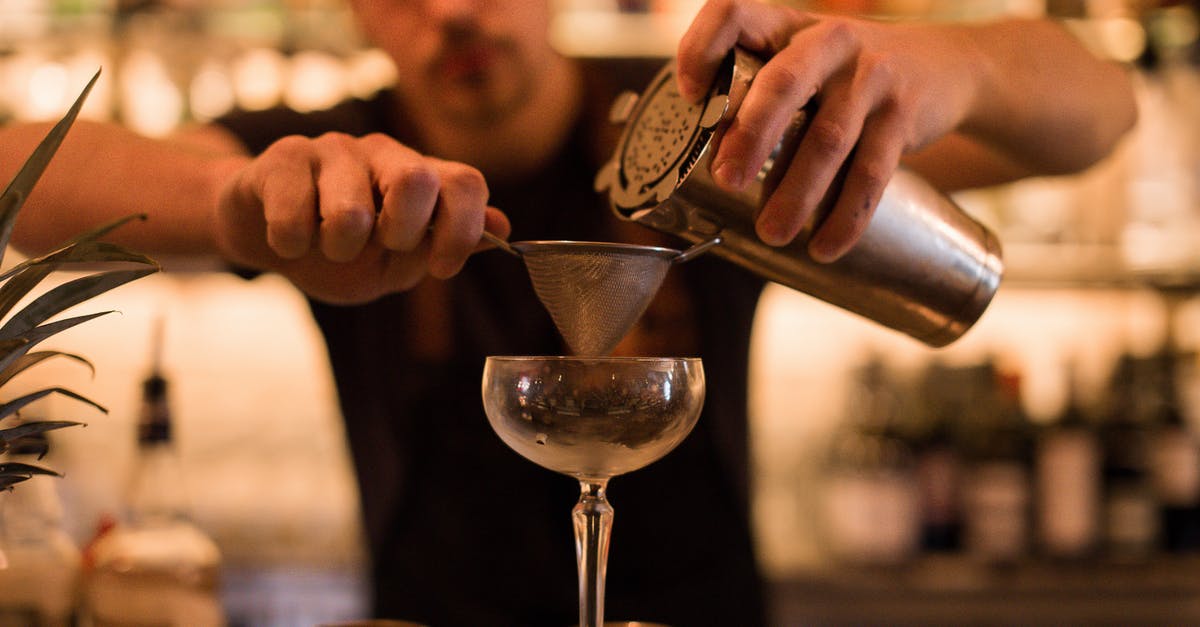What are the optimal conditions in making wild yeast starter?

I recently learned that I don't need to buy packets of yeast to make bread. I can create a sour dough starter by utilizing the wild yeast floating around in the air. Take a look at this article for more information:
http://science.howstuffworks.com/innovation/edible-innovations/sourdough2.htm
What are the optimal conditions for creating a sour dough starter:
- Are there optimal locations that has a higher concentration of wild yeast? (such as a cold/warm place or a place with alot/little light)
- What type of flour would work best?
- I also read somewhere to use acidic fruit juice to help accelerate the process. Is this true? And if so, why?
- Some starters call for sugar and milk. What would these additions do?
Best Answer
(1) One critical element that hasn't been emphasized in answers so far is that the microorganisms that establish your starter mostly come from the flour not the air. The idea that the creation of a starter involves "catching wild yeast from the air" is commonly repeated in many, many books and resources, but I'd be interested if anyone has ever seen a scientific paper that actually verified that airborne yeast is a significant source for establishing sourdough cultures. (I've looked a bit, and I haven't seen that. On the other hand, there is plenty of evidence for a variety of microorganisms, including local ones, in established cultures. But the primary establishing microorganisms come from mainly from the flour.)
A number of people have reported experiments to test the conditions necessary for establishing a successful starter, including ones where they tried their best to kill all starters. Sterilized containers and mixing equipment, sealed containers, and sterilized water have little impact. But sterilized flour will almost always fail to produce a viable starter. (It also makes sense that yeasts and bacteria that would like to eat grain would be likely to be found living on it at a higher concentration that floating around in the air....)
In any case, now that we've established the primary source of the microorganisms, the main goal in a new starter is to provide them with adequate food and a growth environment that will weed out other undesirable organisms. Personally, I've had the best results in beginning with a starter regime that somewhat simulates the life cycle I ultimately want for my starter. Since I generally raise dough at room temperature and expect to feed a room temperature starter roughly every 12 hours to keep it healthy, I do the same when beginning my starter.
But that's just my preference. You can get a starter going with temperatures anywhere from about 55F to 85F -- below that, and the yeast will grow way too slowly, and above that, and you're likely to grow bad stuff in the first week of a new starter. As others have said, 70-80 degrees is probably optimal for quickly establishing a starter. On the other hand, lower temperatures will tend to produce an acidic environment more quickly, which will weed out the first batch of bad bacteria. So, take your pick. As for feeding schedule, it really depends on your preferences, temperature, and hydration level. I wouldn't wait more than about 24 hours between initial feedings, but extra ones don't seem to hurt.
In terms of other conditions, you mainly just want to avoid contamination from other bad stuff, since you're encouraging growth from the flour. Thus, keep the container covered (though not sealed tight -- it can explode, which I know from experience), and out of sunlight (which encourages mold growth). Trying to "catch the yeast from the air" by placing it near an open window or something is more likely than not to contaminate the starter and cause it to fail. I haven't been overly fussy about sterilizing containers or stirring utensils, as long as they are reasonably clean. I also haven't personally had any problem using tap water from a number of different municipalities -- I know some people have said it kills starters, but it never killed mine. To be safe, use water without chemical treatments. But if you plan to use tap water in your doughs, I do believe that you want to start selecting microorganisms that won't be killed from it at the start.
Hydration varies a lot, and I've seen successes with all types of starters. Most people seem to go with about 100% hydration (equal weights of flour and water). That starts out as a thick paste and will become a little "goupy" as the days go by. Others go with higher hydration (like pancake batter), while others make a very dry dough, kneading as much flour as possible into the water, and then bury the dough in a container of flour to ferment. I haven't really seen anyone compare success rates of these various approaches, since everyone seems to have their preferred starter type, but I've found that all of them can work. If anything, the most problematic for me seems to be high hydration: they tend to grow weird stuff in the first week unless fed frequently. With a dry ball starter buried in flour and kept at a cellar temperature, you could probably feed it only a couple times a week and still be successful in getting a starter going.
That covers a lot of the "conditions" question. In sum, a wide range of conditions can work -- just avoid contamination and keep out of the sun. Feed on a regular basis. Don't throw any random stuff in your starter (milk, sugar, grapes, potatoes, beer, whatever) -- in most cases, it is more likely to hurt through contamination rather than help. (See the note about acids below, however...)
Moving on to the other questions:
(2) Whole grain flours work best, since they have a greater number of microorganisms than white flours. I've had greater success with rye, which has different sugars than wheat, but I know other people who swear by whole wheat. I've had a few starters with white flour fail, though, so I've given up trying to start that way. I'd suggest if you want a white flour starter, establish it with whole grains first, and then transition it to feedings with white flour after a couple weeks.
(3) Acidic ingredients can help a starter in the first 3 days or so. Basically, most starters go through a phase after about 2-3 days where you'll see very rapid growth. Don't get hopeful -- that is rarely due to good yeast. Instead, experiments have shown that it is due to a bad bacteria, and unless it is weeded out of your starter, it can prevent the good yeasts and bacteria from getting established.
Luckily, the bad bacteria produce waste products that tend to acidify the starter anyway, and eventually they will acidify it enough so that they can't grow anymore. Sourdough yeast and bacteria are selected to live in acidic conditions (hence, "sour" dough), so they will eventually take over.
Nevertheless, you can help out this weeding out process by giving an acidic boost early on. The simplest way to do this is built into many recipes. Instead of doing a typical sourdough feeding where you double or triple the weight of the starter, many recipes suggest only feeding the same amount for the first 3-4 days of a new starter. So, if you start with 10 units of flour and 10 units of water, you just keeping adding 10 units of each at each feeding. By the fourth or fifth feeding, you're only going to be adding a small amount of new food compared to the overall size of the starter. That will still help the yeast grow, but it will concentrate the acid produced in the starter so far and stop the bad bacteria from establishing itself.
(Note: You don't need a lot of flour to get things going. Even a small amount has a huge amount of microorganisms ready to grow. I usually start with a tiny amount, say 10 grams each of flour and water, and then feed 10 grams each with each feeding. Don't throw any away. After a few days to a week, you'll often be ready to bake your first loaf, and you don't end up wasting any ingredients.)
A number of online experimenters have tried using other acidic components at the outset, and the easiest option does seem to be pineapple juice used in place of water in at least the initial feeding. Orange juice and apple cider can also work if used in the feedings for the first few days. Other acids (e.g., vinegar, lemon juice) can work, but it's harder to get the "dose" right. The most effective seems to be a dose of ascorbic acid powder added at the outset, but most people don't have that on hand. (Don't try crushing vitamin C tablets -- they usually have buffers that will negate the acid effect.)
Personally, I find feeding once every 12 hours for the first few days (as opposed to every 24 as recommended by many recipes) and keeping the feeding amount the same, but not throwing any away for the beginning is sufficient to overcome the bad bacteria. The fruit juice can also add contaminants, so I don't usually use it, but it appears to improve your chances significantly if you use widely spaced feeding schedules or higher hydrations.
By the way -- note that the acid will only get you over the first hump. In most cases, it will take a week or two before you've really weeded out most of the bad stuff from your starter for good. Keep up the regular feedings.
(4) Milk and sugar. Just don't do it. Milk can provide a slight acidity as it sours, but it's more likely to bring in bad bacteria or grow mold than the fruit juice option mentioned above. Sugar helps a lot of microorganisms grow, but at the beginning of a starter, it's more likely to grow bad bacteria than good yeast. I know some people add sugar to a mature starter with each feeding, but it's not necessary. I don't have a lot of experience with this, but anecdotally I've heard that it can throw off the "rhythm" of yeast and bacteria growth even in a mature starter, effectively reducing the rising potential of your starter.
Sometimes with a mature starter, you should add milk and/or sugar as part of the recipe to build the final dough. That will depend on the type of bread. But I never use either in regular feedings.
Pictures about "What are the optimal conditions in making wild yeast starter?"



Quick Answer about "What are the optimal conditions in making wild yeast starter?"
You can get a starter going with temperatures anywhere from about 55F to 85F -- below that, and the yeast will grow way too slowly, and above that, and you're likely to grow bad stuff in the first week of a new starter. As others have said, 70-80 degrees is probably optimal for quickly establishing a starter.What is the best temperature for starter?
A sluggish sourdough starter likely needs a boost in temperature to get things going. Remember: Sourdough starter performs best at 70-85\xbaF.What is needed to start the wild yeast culture for sourdough?
All you need is flour, water and a little bit of patience. Before you know it, you'll have your very own bubbly, active starter ready to make THE BEST sourdough bread!What temperature will kills sourdough starter?
Things that WILL kill your sourdough starter Yeast dies at 140\xb0F, and it's likely that your sourdough starter will suffer at temperatures even lower than that. It's best to maintain your starter at comfortable room temperature (around 70\xb0F), though a little higher or lower won't hurt anything.How do you grow wild yeast?
How to Capture Wild YeastHow to capture wild yeast for bread (and WHY it works)
More answers regarding what are the optimal conditions in making wild yeast starter?
Answer 2
Some answers to your questions, based on my experience with wild sourdough starter in San Francisco:
- 70-80F is the ideal temperature range. Below that the yeast incubates very slowly; above it, the starter will tend to ferment alcoholically.
- Do not leave the starter in direct sun. UV light is a powerful sterilizing agent.
- An organic, cold-processed (i.e. stone milled) flour works best, because it will retain the maximum amount of its own wild yeast on it. Cheeseboard: Collective Works likes to start with rye flour and gradually add bread flour, but they don't give a tested reason for this.
- I have never heard of using fruit juice in a sourdough starter. I would be dubious about it; you'd be likely to end up with vinegar.
- Sugar is unnecessary for sourdough starters.
- Use purified water; chlorine/chloramine/ozone in tap water can kill your starter.
Finally, starters incorporating milk are fridge-only starters (as opposed to flour-and-water starters, which can be kept at room temperature if split frequently) which depend on the bacteria and lactic acid from the fermenting milk for part of their sourness. They can be effective, and actually a good choice if you live somewhere with weak/poor wild yeast. Note that you cannot transform a milk sourdough into a water sourdough, and using up 2 cups of milk every 2 weeks is more expensive than 2 cups of filtered water.
Answer 3
Although there are ideal conditions for sourdough, it colonises the yeast very easily so many of these measures may be unnecessary. Likewise, if you live in an area with just a low volume of yeast spores in the air then these measures may not even help, although they will make it a much friendlier environment for yeast to grow in.
In its most basic form a sourdough starter is made of flour and water (warm, not hot or cold). Technically this is enough, as all the yeast needs to do is convert the complex sugars (ie starch) into simple sugars with there naturally occurring enzyme amylase, they can then 'eat' the sugars and produce CO2. It takes time for the yeast to produce the amylase and convert the complex sugars into simple sugars so sometimes regular caster sugar is added to speed up the process. That's why I think the milk and juices might be added as they contain additional sugars, however as mentioned in the previous answer it will be a lot more expensive than if you use water.
Until the yeast has been colonized you should keep the starter in a warm place, no warmer than blood temperature. Once it is clearly fermenting there is no need to keep it warm as it will respire to quickly and so it's best to keep it at room temperature, but not somewhere cold and draughty.
The yeast in the starter dough do not contain chloroplasts so cannot photosynthesise, this means it won't make any difference whether its in the dark or light. Unless it is in too much light as the UV will damage the cells, don't fret if you've done this as it won't work immediately especially with the flour acting as a kind of barrier, but it isn't good.
Unbleached, organic flours work best as they haven't any pesticides used that could stifle growth. Whole wheat is best as it has the husk left so it's more likely to contain yeast. I don't often use these organic flours so I don't have any and I always use normal flours and it works fine, do its not necessary but I can imagine it certainly helps.
Answer 4
For years I have made my starter out of store bought all purpose flour and yeast. I then wait until it quits bubbling and store it in household refrigerator. Generally I do not have to make new starter after using a bit for pancakes or sourdough bread. All that is necessary is to add a tablespoon of sugar, stir and refrigerate.
To replenish the supply, I add 1c flour, 2T. sugar, & 1c warm water. Stir and let stand in warm kitchen until bubbly action stops and then refrigerate.
This has been quite successful enjoying the praise of all that consume my bread.
Answer 5
I believe we are talking about wild yeast starter: that means capturing the beasties that are freely floating in air not rehydrating a pure starter.
Here is where it gets to be work: there are alot of unwanted beasties tagging along in your chosen medium. They will die off thru any of a number of protocols for DIY sourdough starter.
Usually, reckon on three days of taking a bit of the older batch and creating a new one until the PH and food source and enzymes all crowd out the baddies.
Did this in school years ago and now am grateful for properly cultured starters!
Oh, and if your kitchen is sterile then wine-grapes are a trove of yeastiness. Though their natural inclination is to become wine, France has some lovely breads that borrow beasties from these fine fruits.
Sources: Stack Exchange - This article follows the attribution requirements of Stack Exchange and is licensed under CC BY-SA 3.0.
Images: Peter Holmes, Tima Miroshnichenko, Tima Miroshnichenko, Rachel Claire
